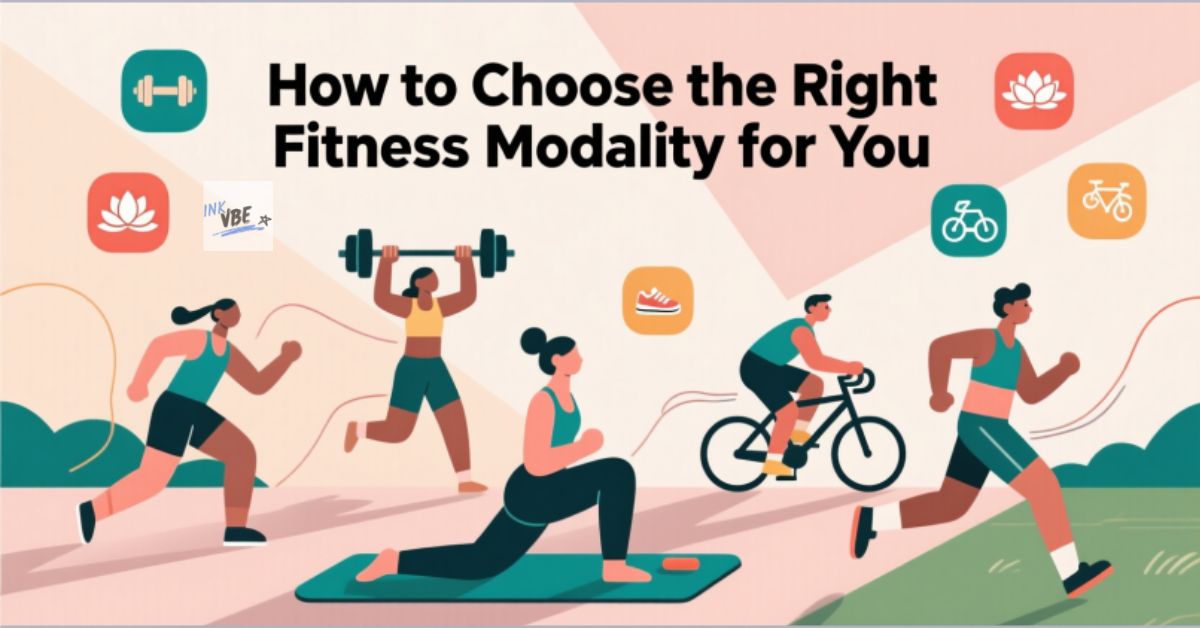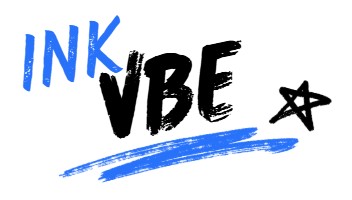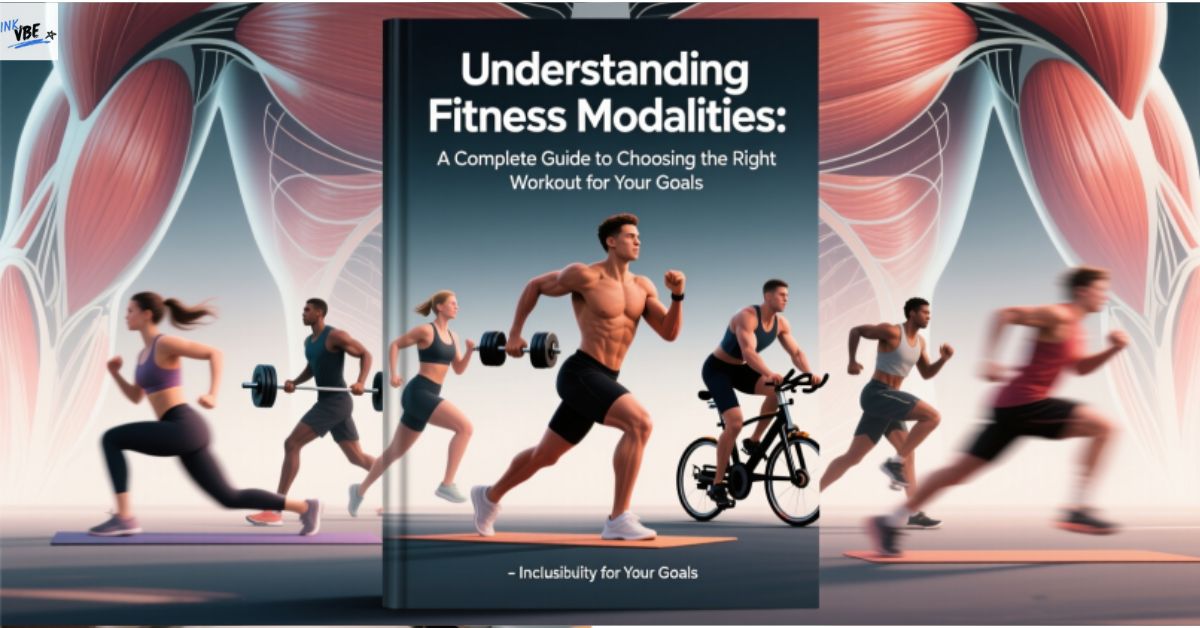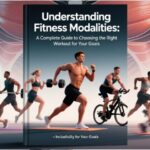In today’s fast-paced world, staying active is more important than ever. But with so many workout options available—from yoga and weightlifting to HIIT and swimming—how do you know which one is right for you? The answer lies in understanding fitness modalities. These are different types of physical activities designed to improve various aspects of health, such as strength, endurance, flexibility, balance, and mental well-being. Each modality targets specific bodily systems and offers unique benefits. By learning about these diverse approaches, you can create a well-rounded fitness plan that supports your lifestyle, goals, and overall wellness.
Fitness modalities are not just about burning calories or building muscle—they represent a holistic approach to movement. Whether you’re a beginner looking to start your fitness journey or an experienced athlete aiming to enhance performance, knowing the range of available modalities helps you make informed choices. The key is not to stick to just one type of exercise but to blend several modalities for optimal results. This comprehensive guide will walk you through the science behind fitness, explore major types of modalities, explain how to choose the right one, and offer practical tips for designing a safe and effective routine.
The Science Behind Fitness Modalities
Before diving into specific types of workouts, it’s essential to understand the science that makes them effective. All fitness modalities work by challenging your body in specific ways, prompting physiological adaptations. These changes occur in your cardiovascular system, muscles, nervous system, and metabolism. The four fundamental principles of exercise science—overload, progression, specificity, and recovery—form the foundation of every successful training program.
Overload means gradually increasing the intensity, duration, or frequency of your workouts to push your body beyond its comfort zone. Progression involves systematically advancing your training over time. Specificity refers to matching your workouts to your goals—running builds endurance, while lifting weights builds strength. Finally, recovery allows your body to repair and grow stronger after exertion. Without proper rest, even the best fitness modalities can lead to burnout or injury.
Your body uses different energy systems depending on the type of activity. Aerobic exercise, like jogging or cycling, relies on oxygen to produce energy over longer periods. It strengthens the heart and lungs and improves stamina. In contrast, anaerobic exercise, such as sprinting or heavy weightlifting, uses stored energy for short, intense bursts. This type of training builds power and muscle mass. Understanding these systems helps explain why certain fitness modalities are better suited for fat loss, endurance, or strength development.
Major Types of Fitness Modalities Explained

There are several broad categories of fitness modalities, each focusing on a different component of physical health. Let’s explore the most common ones in detail.
Cardiovascular Training
Cardiovascular or aerobic modalities are designed to improve heart and lung function. These activities elevate your heart rate for an extended period, enhancing circulation and endurance. Popular examples include:
- Running and jogging
- Cycling (stationary or outdoor)
- Swimming
- Rowing
- Jump rope
- Using elliptical machines or stair climbers
These modalities are excellent for weight management, reducing the risk of chronic diseases like diabetes and hypertension, and boosting mood through the release of endorphins. For best results, aim for at least 150 minutes of moderate-intensity cardio per week, as recommended by health organizations.
Strength and Resistance Training
Strength training focuses on building muscle, increasing bone density, and improving metabolic rate. This category includes:
- Free weights (dumbbells, barbells, kettlebells)
- Resistance bands and cable machines
- Bodyweight exercises (push-ups, squats, planks)
- Weight machines at the gym
Strength-based fitness modalities are crucial for maintaining muscle mass as we age, supporting joint health, and enhancing daily functional movement. Whether your goal is to tone up, gain muscle, or simply stay strong, incorporating resistance training 2–3 times per week can make a significant difference.
High-Intensity Interval Training (HIIT)
HIIT has gained immense popularity due to its efficiency and effectiveness. This modality alternates short bursts of intense effort with brief recovery periods. A typical HIIT session might include 30 seconds of sprinting followed by 30 seconds of walking, repeated for 15–20 minutes. Common formats include:
- Tabata (20 seconds work, 10 seconds rest)
- EMOM (Every Minute on the Minute)
- AMRAP (As Many Rounds As Possible)
HIIT is known for boosting calorie burn both during and after the workout (the “afterburn effect”), improving insulin sensitivity, and increasing cardiovascular fitness in less time than steady-state cardio.
Flexibility and Mobility Training
Often overlooked, flexibility and mobility are vital components of overall fitness. These modalities improve joint range of motion, reduce stiffness, and lower the risk of injury. Techniques include:
- Static stretching (holding a stretch for 20–30 seconds)
- Dynamic stretching (moving through a range of motion)
- Foam rolling and self-myofascial release
- PNF stretching (using muscle contractions to deepen flexibility)
Regular stretching helps maintain posture, supports recovery, and enhances performance in other fitness modalities.
ALSO READ THIS POST: 100 Pilot Medical Drive Suite 300 | Healthcare Guide
Mind-Body Modalities
These practices combine physical movement with mental focus, breathing, and mindfulness. They are especially beneficial for stress reduction, mental clarity, and emotional balance. Key examples include:
- Yoga – Improves strength, flexibility, and relaxation through postures and breath control. Styles range from gentle Hatha to intense Ashtanga.
- Pilates – Focuses on core strength, alignment, and controlled movements. Can be done on a mat or with specialized equipment like the Reformer.
- Tai Chi and Qigong – Slow, flowing movements from Chinese tradition that enhance balance, coordination, and inner calm.
These modalities are ideal for people seeking a low-impact, meditative form of exercise that supports both physical and mental health.
Functional and Integrated Training
Functional fitness prepares your body for real-life movements like lifting, bending, twisting, and reaching. It emphasizes full-body coordination and stability. Examples include:
- CrossFit (a mix of weightlifting, cardio, and gymnastics)
- TRX suspension training
- Agility ladder drills
- Medicine ball exercises
These modalities are excellent for athletes and older adults alike, helping improve balance, coordination, and everyday movement efficiency.
Emerging and Niche Fitness Modalities
New and innovative approaches continue to expand the world of fitness. Some trending modalities include:
- Aquatic fitness – Low-impact workouts in water, ideal for joint issues or rehabilitation.
- Dance-based workouts – Fun, rhythmic classes like Zumba or Barre that combine cardio and toning.
- Combat fitness – Boxing, kickboxing, or martial arts that build power, endurance, and confidence.
- Virtual and tech-driven workouts – Platforms like Peloton, Mirror, or VR fitness games bring personalized training into homes.
These niche options make fitness more accessible, enjoyable, and adaptable to individual preferences.
How to Choose the Right Fitness Modality for You

With so many options, selecting the best fitness modality depends on your personal goals, fitness level, and lifestyle. Consider the following factors:
| Weight Loss | HIIT, Cardio, Circuit Training |
| Muscle Building | Strength Training, Bodybuilding |
| Endurance | Running, Cycling, Swimming |
| Flexibility & Balance | Yoga, Pilates, Tai Chi |
| Stress Relief | Mind-Body Practices, Walking, Swimming |
| Injury Prevention | Functional Training, Mobility Work, Low-Impact Cardio |
Also, think about your schedule, access to equipment, and physical limitations. If you have knee pain, for example, swimming or cycling may be better than running. If you’re short on time, HIIT or home-based bodyweight workouts can be highly effective.
The best approach is cross-training—combining multiple fitness modalities throughout the week. This prevents overuse injuries, keeps workouts interesting, and ensures balanced development across all fitness components.
Designing a Balanced Weekly Fitness Plan
A well-structured routine includes a mix of cardiovascular, strength, flexibility, and recovery activities. Here’s a sample weekly schedule for an intermediate exerciser:
| Monday | 30-min run + core workout | Cardio + Strength |
| Tuesday | Yoga session (45 mins) | Flexibility + Mind-Body |
| Wednesday | Full-body strength training | Resistance |
| Thursday | HIIT (20 mins) + stretching | Cardio + Recovery |
| Friday | Pilates or mobility work | Core + Flexibility |
| Saturday | Long walk or bike ride | Low-Intensity Cardio |
| Sunday | Rest or light stretching | Active Recovery |
This balanced plan ensures all major fitness modalities are covered without overtraining any single system.
Safety, Injury Prevention, and Recovery
No matter which fitness modalities you choose, safety should always come first. Common injuries—such as strains, sprains, or joint pain—often result from poor form, overtraining, or lack of warm-up. Always begin with a 5–10 minute warm-up to prepare your muscles and joints. Cool down afterward with stretching to aid recovery.
Listen to your body. Pain is a warning sign—don’t push through sharp or persistent discomfort. Ensure proper technique, especially in strength and high-intensity workouts. If unsure, consult a certified trainer or physical therapist.
Recovery is just as important as the workout itself. Sleep, hydration, and nutrition play a huge role in how your body adapts to exercise. Aim for 7–9 hours of sleep per night and consume a balanced diet rich in protein, healthy fats, and complex carbohydrates.
Fitness Modalities for Special Populations
Fitness is for everyone, but certain groups need tailored approaches:
- Older adults benefit from balance training (Tai Chi), light resistance work, and low-impact cardio to maintain independence.
- Pregnant women can safely practice prenatal yoga, walking, and modified strength training with medical approval.
- People with chronic conditions (e.g., arthritis, heart disease) should work with healthcare providers to choose safe, effective modalities.
- Individuals with disabilities can engage in adaptive fitness programs using specialized equipment or seated exercises.
Always consult a doctor before starting a new fitness regimen if you have health concerns.
The Future of Fitness Modalities
Technology is reshaping how we exercise. Wearable devices track heart rate, steps, and sleep, offering real-time feedback. Apps and online platforms provide on-demand classes, personalized plans, and virtual coaching. Artificial intelligence is beginning to customize workouts based on individual data.
The future of fitness lies in accessibility, personalization, and integration. Hybrid models—mixing home workouts with gym sessions—are becoming the norm. Sustainability is also gaining attention, with eco-friendly gyms and minimal-equipment training on the rise.
Conclusion
Fitness modalities are the building blocks of a healthy, active life. From traditional cardio and strength training to modern virtual classes and mind-body practices, each modality offers unique benefits. The key to long-term success is variety, balance, and consistency. By exploring different fitness modalities, listening to your body, and aligning your workouts with your goals, you can create a sustainable routine that supports physical, mental, and emotional well-being. Remember, fitness is not a one-size-fits-all journey—it’s a personal path to a stronger, healthier, and happier you.
Frequently Asked Questions (FAQs)
1. Can I combine yoga and weightlifting in the same day?
Yes, combining yoga and weightlifting is highly beneficial. Yoga improves flexibility and recovery, while weightlifting builds strength. Just ensure you allow enough time for rest and hydration between sessions.
2. Are fitness modalities suitable for people with no prior exercise experience?
Absolutely. Most fitness modalities offer beginner-friendly versions. Start with low intensity, focus on form, and gradually increase difficulty. Consider working with a trainer for guidance.
3. How do I know if a fitness modality is effective for weight loss?
A modality is effective for weight loss if it creates a calorie deficit. Combine cardio (like running or cycling) with strength training and a healthy diet for best results.
4. Can fitness modalities help with anxiety and depression?
Yes, many modalities—especially yoga, walking, swimming, and group classes—have been shown to reduce symptoms of anxiety and depression by releasing endorphins and promoting mindfulness.
5. Is it necessary to use equipment for fitness modalities?
No. Many effective modalities, such as bodyweight training, walking, and yoga, require little to no equipment. You can achieve great results with minimal gear, especially at home.





